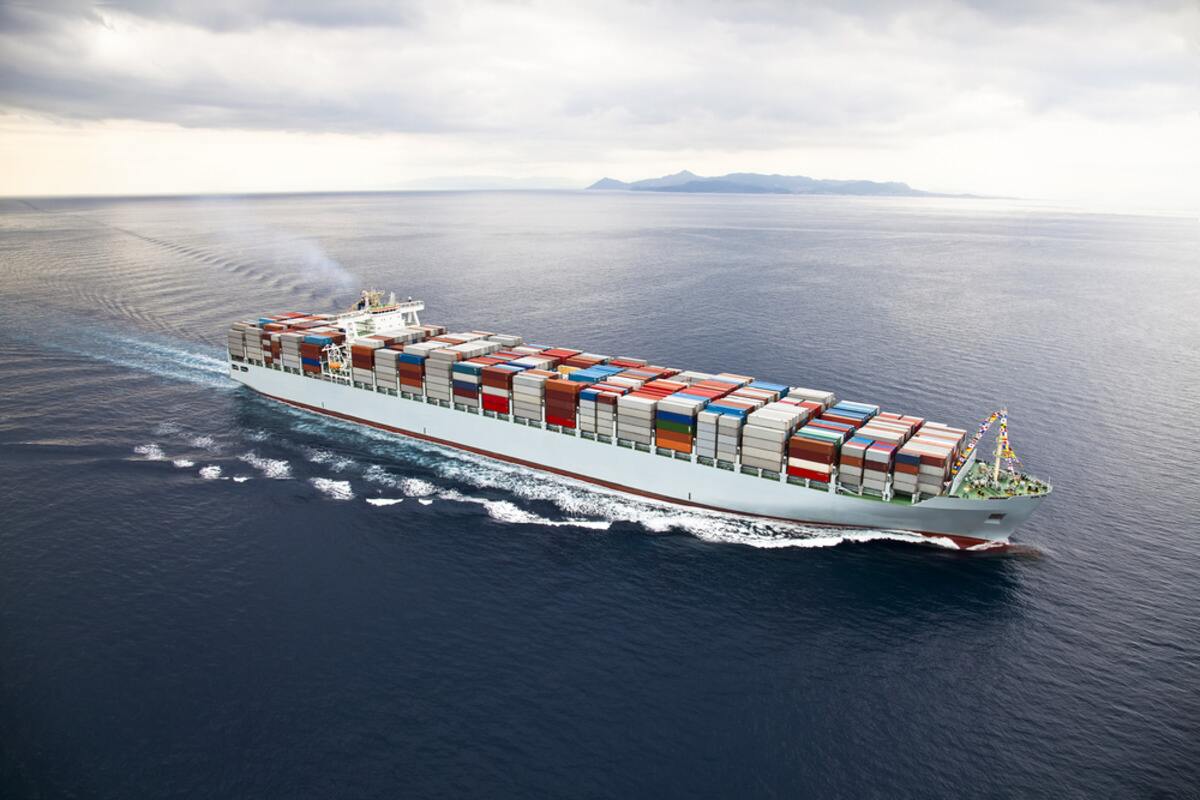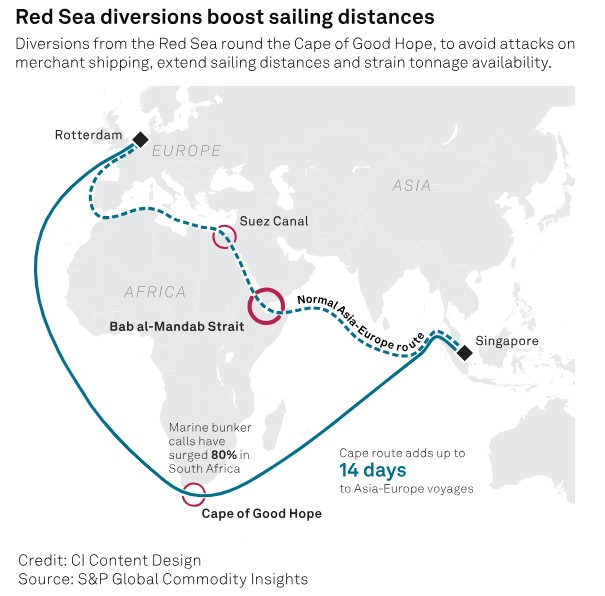
Shippers unlikely to return quickly to Red Sea after ceasefire
NEW YORK : Major shipping companies are likely to take their time before fully resuming transits through the Red Sea, waiting to see if a ceasefire announced May 6 results in an end to attacks by Houthis on ships in the region over a prolonged period.
A ceasefire between the US and “relevant authorities” in Yemen includes an agreement to stop targeting each other, including attacks on US ships in the Red Sea and its entrance at the Bab al-Mandab Strait off the east coast of Yemen, Oman News Agency reported May 6, citing a foreign ministry spokesperson.
That will safeguard “freedom of navigation” and ensure “the unimpeded flow of international commercial shipping,” it said.
Shipping industry group BIMCO said in response to a request for comment: “We are still reviewing the various aspects of the reported ceasefire. As a matter of precaution, shipowners are advised to maintain their current risk management measures until further notice.”
Container shipping giant Maersk declined to comment on its plans, noting its financial earnings are on May 8. Fellow container line Hapag-Lloyd told Platts, part of S&P Global Commodity Insights, that it is too early to judge. “We will continue to closely monitor and analyze the latest developments and their impact on the security situation in the Red Sea. Otherwise, the following applies unchanged: we will return to the Red Sea when it is safe to do so,” a spokesperson said.

US Navy Captain Lee Stuart at the US Fifth Fleet base in Bahrain said in an interview on April 23 that shippers would want a diplomatic truce and at least three months of no attacks before they would consider returning to the Red Sea.
Shipping through the Red Sea has dropped to about 50% of the traffic before the Iran-backed Houthis began attacks on US, UK, and Israel-linked ships in November 2023, according to Stuart, who is the director of the US Navy-led Joint Maritime Information Center in Bahrain.
The US stepped up air strikes on the Houthis in March, striking over 1,000 targets in Yemen since then.
US President Donald Trump said May 6 that the Houthis would “not be blowing up ships anymore”.
“They say they will not be blowing up ships anymore and that’s what the purpose of what we were doing,” he said.
Oman’s foreign minister Badr al-Busaidi said his country had mediated efforts to achieve a ceasefire.
“In the future, neither side will target the other, including American vessels, in the Red Sea and Bab al-Mandab Strait, ensuring freedom of navigation and the smooth flow of international commercial shipping” he said.
The effect on markets has been limited thus far. Tanker freight rates have been fairly steady through 2025. Platts assessed the rate to carry a 140,000 mt cargo from the Persian Gulf to the UK/Continent at $22.89/mt May 7, having averaged $24.10/mt since the start of the year. Platts assessed the rate to carry a 40,000 mt cargo of clean products on the same route at $50.63/mt May 7, just below an average of $51.09/mt since the start of the year.
Limited scope
“While there continue to be conflicting narratives within Houthi media channels around the accuracy of the ceasefire, it is widely accepted that following the announcement by Oman declaring it had negotiated a truce that this is a formal mechanism of peace,” Munro Anderson, head of operations at marine war risk and insurance specialist Vessel Protect — part of Pen Underwriting — told Platts.
However, he cautioned that there remain a number of immediate questions surrounding the extent of the truce and how long it is likely to hold.
“Following such a prolonged period of elevated risk within the Red Sea, it is likely that it will take some time for the shipping industry to derive confidence in Houthi statements of peace,” Anderson said. He added that the conditions surrounding the truce are known to be volatile and liable to change at short notice.
The ceasefire agreement is strictly bilateral, involving only the US and the Houthis, and is limited in scope; it does not extend to Israel or to any ships that the Houthis accuse of supporting the war in Gaza, Jack Kennedy, head of Middle East and North Africa Country Risk at S&P Global Market Intelligence, said.
S&P Global Market Intelligence assesses that it represents a “pragmatic, limited de-escalation rather than a pathway towards comprehensive peace,” and the potential for renewed Houthi attacks on US ships remains high, as well as US counter strikes against Houthi military assets, Kennedy added.
The US decision to halt strikes on the Houthis is, at least in part, likely intended to reduce the regional attack threat ahead of a scheduled visit of President Trump to Saudi Arabia beginning May 13, and is likely to facilitate ongoing nuclear negotiations between the US and Iran — the Houthis’ main external backer, Kennedy said.
The fact that the agreement only appears to cover US ships makes it “very curious,” Richard Nephew, senior program director at the Center on Global Energy Policy at Columbia University and a former sanctions policy coordinator at the US Department of State, told Platts. As such, it does not guarantee freedom of navigation for any vessel not under a US flag, meaning that other ships could be attacked and especially Israeli ones, of which the Houthis have a very expansive definition, he said.
Source : Platts
